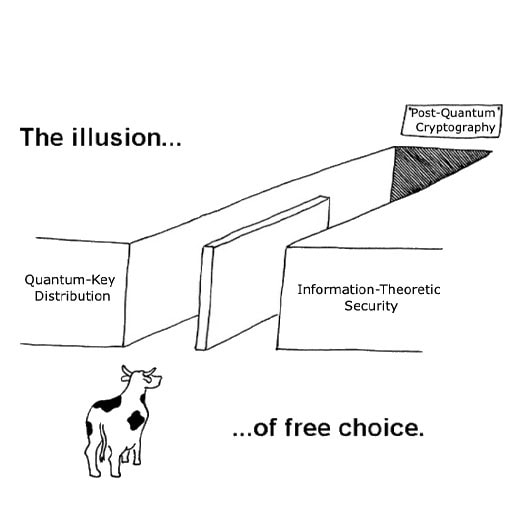The rapid advancement of artificial intelligence (AI) in cryptanalysis has transformed how attackers exploit vulnerabilities in encryption schemes. One of the most concerning developments is the use of AI-driven differential and sectional attacks against symmetric key encryption, a fundamental security mechanism for data protection worldwide.
As AI models become increasingly adept at recognising cryptographic patterns and weaknesses, organisations must rethink how they generate, manage, and protect encryption keys. Relying on traditional approaches is no longer enough. Instead, crypto-resilient architectures, including Quantum-Powered Encryption (QPE) and Quantum Random Number Generators (QRNGs), must become a priority.
How AI-Powered Sectional and Differential Attacks Work
1. Differential Attacks: AI’s Pattern Recognition Against Symmetric Keys
Differential cryptanalysis involves analysing how slight changes in plaintext affect cipher-text patterns over multiple encryption rounds. Classical methods required extensive data and manual analysis, but AI accelerates the discovery of biases in encryption processes. Deep learning models can rapidly train on massive cipher-text datasets, uncovering predictable structures in key scheduling or S-box implementations.
Why is this dangerous?
- AI can detect cryptographic weaknesses that would otherwise be imperceptible to human researchers.
- High-performance GPUs and quantum-inspired computing allow real-time brute-force optimisations.
- Even minor weaknesses in symmetric encryption, especially suboptimal AES implementation, become exploitable.
2. Sectional Attacks: Breaking Encryption in Parts
AI has also revived sectional attacks, where attackers do not attempt to break a full encryption key at once but rather extract parts of it and use predictive models to reconstruct the full key. Machine learning models can infer partial key structures by analysing encrypted outputs under different conditions, effectively reducing the key search space to something far more manageable.
What makes this worse with AI?
- AI can optimise sectional attack vectors, reducing the number of required plaintext to cipher-text pairs.
- Federated learning allows attackers to train models across distributed encrypted datasets.
- Weak key management practices, such as reusing similar keys, increase AI’s ability to predict missing key fragments.
The Need for Proactive Mitigation Strategies
With AI rapidly improving the efficiency of these attacks, organisations must adopt cryptographic agility and proactive mitigation strategies to defend their systems against this evolving threat landscape.
1. Strengthening Key Generation with QRNGs
One of the most effective ways to prevent AI from finding patterns in key structures is to generate encryption keys with a Quantum Random Number Generator (QRNG). Unlike traditional pseudo-random number generators (PRNGs), which rely on deterministic algorithms, QRNGs leverage quantum mechanics to produce truly unpredictable key material, ensuring:
- No statistical biases AI can exploit.
- Maximum entropy across the entire key space.
- Stronger resistance to differential and sectional attacks.
2. Implementing Quantum-Powered Encryption (QPE)
While QRNGs improve key security, encryption itself must also evolve. ExeQuantum’s Quantum-Powered Encryption (QPE) enhances traditional encryption by:
- Utilising quantum-enhanced cryptographic methods to create unpredictable transformations within encryption schemes.
- Integrating post-quantum cryptographic algorithms for long-term security.
- Providing a seamless API-based implementation that future-proofs enterprise security frameworks, reducing the implantation burden on enterprises.
3. Ensuring Proper AES Implementation
While AES remains the global standard for symmetric encryption, poor implementations expose systems to avoidable weaknesses. ExeQuantum provides consulting services to ensure organisations:
- Use optimal AES configurations (e.g., AES-256 over AES-128 where feasible).
- Implement hardened key scheduling to avoid predictable sub-key generation.
- Integrate hybrid encryption models, combining AES with post-quantum cryptography (PQC) for added resilience.
4. Continuous Cryptographic Agility
Organisations must move beyond static encryption models and adopt frameworks that allow seamless transitions to stronger cryptographic methods. A well-designed crypto-agility roadmap includes:
- Automated cryptographic updates that deploy fixes against newly discovered vulnerabilities.
- Modular encryption frameworks that support post-quantum security standards.
- Proactive threat modelling that incorporates AI-driven risk assessments.
The Path Forward: Staying Ahead of AI Threats
The cryptographic landscape is evolving rapidly, and AI-powered attacks on symmetric keys will only become more sophisticated. Organisations that fail to modernise their encryption strategies risk catastrophic breaches as AI-driven cryptanalysis outpaces traditional defences.
ExeQuantum is at the forefront of securing data against these emerging threats. Through Quantum-Powered Encryption (QPE), QRNG-enhanced key generation, and expert consulting on AES implementations, we provide a comprehensive security approach that ensures encryption remains resilient against AI-enhanced attacks, post-quantum threats, and future adversarial advancements.
The next generation of cryptographic security is here. The question is, will you be ready?









